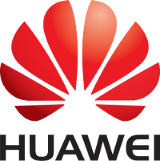Huawei and QUALCOMM MBMS Mobile TV Interoperability Test
Tuesday, January 23rd, 2007
Industry Giants Collaborate to Reach Breakthrough Milestone in MBMS Mobile TV Technology
Shenzhen — Huawei Technologies Co., Ltd. (“Huawei”), a leader in providing next generation telecommunications network solutions for operators around the world, today announced that together with QUALCOMM, it has successfully completed the industry’s first commercial MBMS (Multimedia Broadcast Multicast Service) mobile TV interoperability testing (IOT), a mobile TV solution based on 3GPP Release 6. The IOT was performed on Huawei’s UMTS/HSPA network with handsets based on the Mobile Station Modem™ (MSM™) MSM7200™ chipset solution from QUALCOMM. During the IOT, MBMS technology was used to transmit TV programs at 256 Kbps, which played clearly and smoothly. Users were able to quickly switch channels by pressing navigation buttons on the handset, and MBMS allowed streaming to be suspended during an incoming voice call and automatically resumed streaming when the call ended. The successful IOT demonstrates that MBMS is on-track for large-scale commercial deployments in 2007.
MBMS is the industry’s most advanced mobile TV standard and allows network operators to roll out mobile TV services with relatively inexpensive deployment costs as compared to other mobile TV standards. MBMS supports both multimedia broadcast and multicast services, which allows operators to either directly broadcast multimedia content to all subscribers or only to a specific group of subscribers respectively. MBMS also supports abundant mobile multimedia applications. To provide MBMS mobile TV services, network operators need only a software upgrade to their existing UMTS/HSPA networks, and eliminates any required investment in additional radio frequency resources.
Huawei is a global leader in the mobile TV service field. In October 2005, Huawei was the first to launch and subsequently commercially deploy CMB (Cell Multimedia Broadcasting) in Hong Kong, China. Profound research and rich CMB commercial experience set the foundation of Huawei’s leading position in MBMS solution.
Based on the commercial CMB technology, Huawei’s MBMS solution adopts special PTP (Point-to-Point) and PTM (Point-to-Multipoint) technologies, allowing a single frequency to bear more than a dozen mobile TV channels and helping operators to develop applications including multimedia advertisements, free and premium TV channels and group sending of multimedia messages. Since Huawei’s MBMS solution adopts advanced radio resources management algorithms, it ensures that operators realize the radio resources sharing between MBMS service and other mobile services to the largest extent. Huawei’s MBMS solution is compatible with the commercialized CMB solution, meaning today’s 3G handsets would only require a software update to support MBMS service — further facilitating the rollout of MBMS services. QUALCOMM sampled the MSM7200 chipset supporting 7.2 Mbps HSDPA and up to 5.76 Mbps HSUPA last year, delivering the first handset chipset platform capable of supporting full-rate MBMS.
Yu Chengdong, president of Huawei Wireless Network Product Line, remarked: “MBMS service will be widely adopted by operators this year, with more and more equipment and terminal suppliers supporting MBMS service. Our CMB commercial deployment in Hong Kong in May 2006, followed by the industry’s first commercial launch of our MBMS mobile TV solution will help operators stay at the forefront of multimedia mobile broadband market. ”
Luis Pineda, senior vice president of marketing and product management for QUALCOMM CDMA Technologies, commented: “QUALCOMM’s successful testing with Huawei is a significant milestone in the commercialization of MBMS technology, which gives network operators the ability to offer real-time infotainment to wireless users over their UMTS networks. We remain committed to working closely with the entire wireless industry in bringing new mobile capabilities to market around the world.”
Latest News
- Barb to start reporting TV-set viewing of YouTube channels
- SAT FILM selects multi-DRM from CryptoGuard
- Qvest and ARABSAT to launch OTT streaming platform
- ArabyAds & LG Ad Solutions partner with TVekstra in Turkey
- Freeview NZ satellite TV service to move to Koreasat 6
- Comscore expands YouTube CTV measurement internationally
